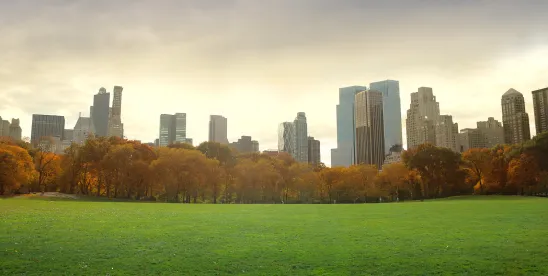New York City enacted Local Law 97 (LL97) in 2019 as part of the Climate Mobilization Act, establishing one of the most ambitious building emissions regulations in the country. However, it intentionally included a ramp-up period with minimal consequences for non-compliance. That period ended in 2024, and this important ordinance is no longer flying under the radar. While annual reporting requirements formally begin in May 2025, the NYC Department of Buildings (DOB) has introduced a limited grace period and extension options to give building owners more flexibility to comply without penalty—reflecting the City’s recognition of the complexity and scale of LL97’s implementation. The law applies to large buildings, which account for nearly 70% of the city’s greenhouse gas emissions, and requires owners to meet strict carbon reduction targets that become more stringent over time. LL97 introduces phased compliance deadlines, financial penalties for noncompliance, and significant legal and financial considerations for property owners, investors, and tenants.
This blog is the first in a series examining LL97’s legal implications, including compliance strategies, enforcement risks, and the broader impact on the real estate market.
What Is Local Law 97?
LL97 establishes strict carbon emissions limits for large buildings throughout New York City. The first compliance period began in 2024, with reporting and fines on this period assessed starting May 1, 2025. The law aims to reduce emissions by 40% by 2030 and achieve net-zero emissions by 2050. See N.Y.C. Admin. Code § 28-320. Buildings that exceed these limits will face substantial penalties—up to $268 per metric ton of CO₂ emissions over the applicable threshold. This aggressive regulatory approach reflects New York’s commitment to decarbonization and aligns with state mandates under the Climate Leadership and Community Protection Act (CLCPA), N.Y. Envtl. Conserv. Law § 75-0107.
Why Does LL97 Matter to Owners and Occupants of NYC Real Estate?
The law seeks to fundamentally change how commercial and residential buildings manage their energy use, pushing owners and managers away from fossil fuel dependency for electricity and heat. Compliance is no longer optional—property owners must actively reduce their carbon footprint or face financial penalties. Investors and lenders are taking note, with LL97 compliance increasingly factoring into property valuation, due diligence, and loan approvals. Tenants, particularly in commercial leases, will also feel the effects as landlords adjust lease terms to share the cost of compliance.
For developers and property owners, the challenge is twofold: first, understanding the technical requirements of the law, and second, navigating the financial and legal complexities of implementing energy efficiency measures, changing energy sourcing, or purchasing renewable energy credits (RECs). The implications extend beyond retrofits—leasing structures, financing agreements, and sale negotiations will all need to account for LL97 compliance.
Key Compliance Deadlines and Phases
LL97 establishes a phased approach to emissions reduction, with compliance thresholds tightening every five years:
- 2024–2029: Initial emissions limits take effect, with an estimated 11% of buildings exceeding their caps.
- 2030–2034: Stricter limits apply, affecting up to 80% of covered buildings if no efficiency upgrades are made.
- 2035–2049: Further reductions will be required, forcing deep energy retrofits.
- 2050: Net-zero emissions goal for covered properties.
Property owners must submit their first annual LL97 compliance reports by May 1, 2025, but the DOB has issued a 60-day grace period (through June 30, 2025) during which reports can be submitted without financial penalties. In addition, an extension through Aug. 29, 2025, may be requested if certain conditions are met, including having retained a registered design professional by Feb. 1, 2025. See NYC Dep’t of Bldgs., Local Law 97 Reporting Portal Announcement (March 3, 2025).
Who Needs to Comply?
LL97 applies to:
- Buildings over 25,000 square feet
- Multiple buildings on the same tax lot totaling over 50,000 square feet
- Condominium buildings under a single board exceeding 50,000 square feet (N.Y.C. Admin. Code § 28-320.1)
Exemptions exist, but most commercial and residential buildings must comply.
LL97 introduces complex regulatory and financial challenges for New York City’s real estate market. Owners, developers, investors, and—in some cases—tenants must take proactive steps to ensure compliance, avoid penalties, and plan for long-term sustainability. With enforcement beginning soon, understanding LL97’s legal obligations and available compliance strategies is essential.
For example, the law imposes its obligations on building owners. Those owners, however, often do not have direct control over a building’s energy usage—especially outside of common areas. That is not a defense for failure to comply under the statute. Thus, owners may seek to impose requirements through their leases on tenants to shift compliance obligations—or even penalties—onto those tenants. This compliance shifting can be complicated, particularly in multi-tenant buildings. Although emissions limits vary by use group, the law poses particular challenges for energy-intensive operations such as hospitals and data centers.
These challenges, along with other complexities and recent developments in how the City is enforcing the law, will be explored in follow-up posts.





 />i
/>i

